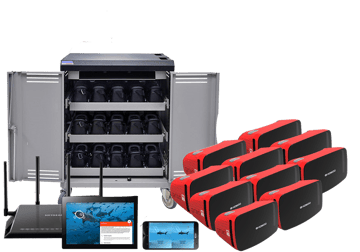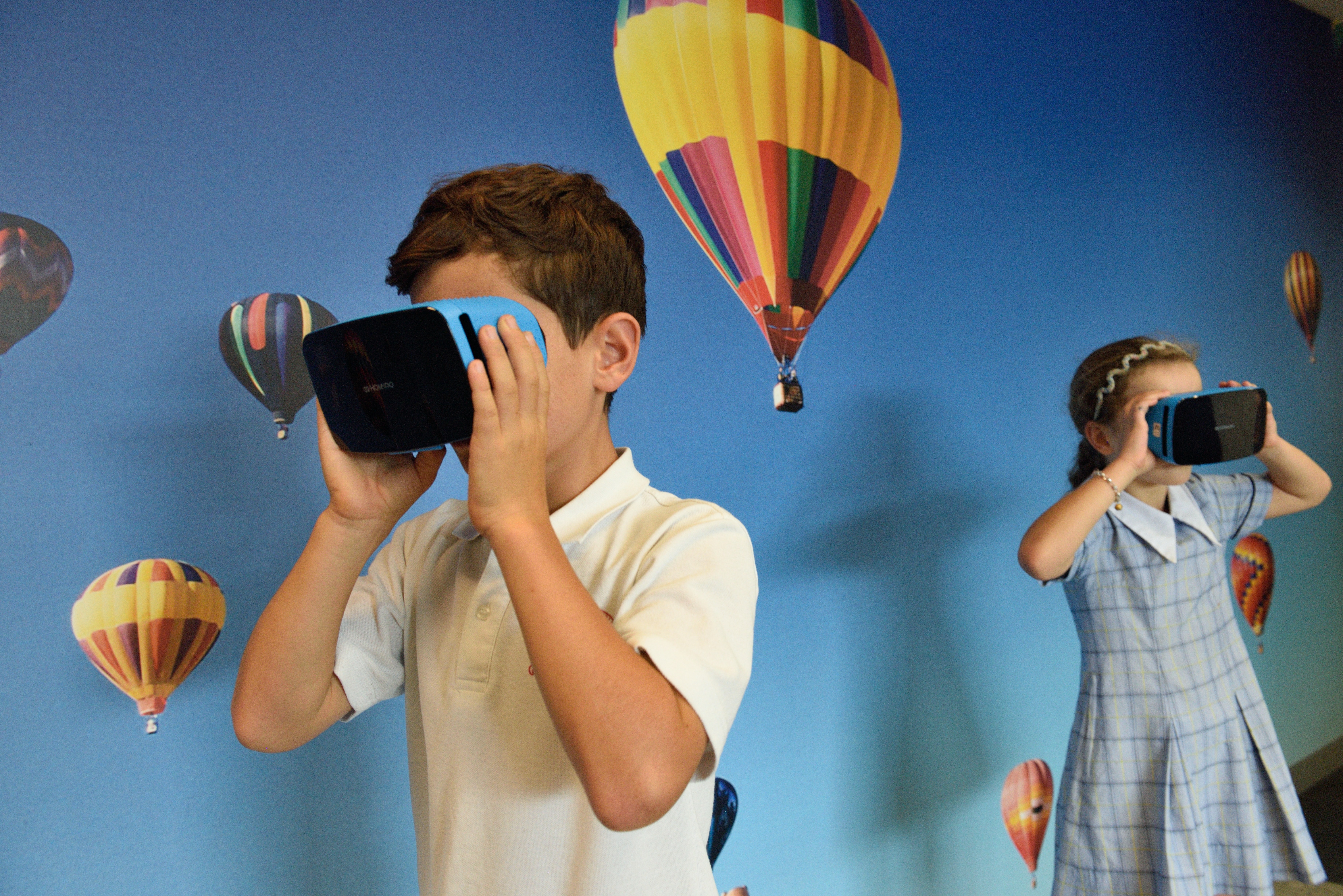Imagine if your school-age child had the opportunity to build a robot, dissect an animal in a virtual science lab, and bend the laws of physics without leaving home. Virtual reality (VR) continues to open up a world of opportunities for several industries including manufacturing, healthcare, construction, military training, and, of course, gaming.
By Hugo Britt
But the technology’s ability to deliver immersive and stimulating educational content is perhaps one of its most beneficial applications. Whether it’s providing students with a vibrant, virtual world for learning key educational content, training medical students in a safe and controlled virtual environment, or making cultural institutions and galleries around the world accessible to all, the opportunities are endless.
The Louvre, for example, recently launched a seven-minute immersive experience - Mona Lisa: Beyond the Glass. This VR exhibition provided art fans with the opportunity to get a close-up look at one of the world’s most famous paintings from the comfort of their own homes.
In 2018, the Natural History Museum partnered with Sky to create Hold the World – an educational VR experience that transports natural history fans to the museum’s home in London. Coming face-to-face with the legendary Sir David Attenborough, who provides additional fun-facts and educational content, the experience gives an up-close view of the museum’s world-famous exhibits.
Educating Students with VR During COVID-19
Pico Interactive, a creator of VR platforms, and VictoryXR, which develops VR and AR education solutions, have formed a partnership to help educate and engage students with remote learning for the duration of the coronavirus pandemic.
The companies’ joint mission is to help students to learn by doing as well as hearing and seeing through VR. By donning a headset, students can travel to a virtual science lab where they’ll have the opportunity to do things they would never be able to do in a normal classroom environment, whether it’s experimenting with volatile substances or dissecting a variety of animals.
A study on medical training found that VR learning results in 80% retention a full year after training, while only 20% of information is retained only one week after traditional training.
How VR Measures Up to Traditional eLearning
The primary benefit of VR learning is increased levels of immersion and student engagement. While traditional eLearning happens through a 2D screen, VR learning allows students to interact with objects, manipulate and build something, or virtually touch objects that they might not have access to in their classroom. A student learning chemistry can experiment with chemicals without the risk of dangerous exposure or causing an actual explosion, or they can defy the rules of biology completely by holding a human heart in their hands and stepping inside to explore further.
In VictoryXR lessons, students can enter a world where the laws of gravity are suspended as they experience Newton’s Laws in a virtual reality called Newton’s House of Forces. They can dissect a frog without the challenges of traditional methods through the Dissection Simulator lesson. And in Rad Robots, students can learn to program robots in VR and then turn them loose in a 3D scenario to experience their creation.
How to Access VR Tech
Pico Interactive and Victory XR provide a variety of education models. For example, schools can purchase a headset and download educational software from the Pico store.
VictoryXR offers VR headset bundles ranging from $1,250 to $5,000. “A teacher could purchase 25 or 30 headsets for a full class setting or aim smaller, say five or six headsets, for students to learn in more of an independent project setting, similar to the days when students shared computers in a lab,” says Steve Grubbs, CEO of VictoryXR.
Teachers are able to deploy a lesson across multiple headsets that they manage through a computer, a tablet, or other mobile devices. “If the classroom is short of a headset, most education packages will allow the teacher to easily project the lesson onto a monitor so everyone is included,” explains Ennin Huang, Pico Interactive’s vice president of design.
The Future of VR in Education
In light of the coronavirus pandemic, teachers are experimenting with digital tools they might otherwise have neglected in order to continue their students’ education.
“We anticipate teachers will develop new habits and parents will develop new expectations in education based on the tools that they have now been exposed to,” says Grubbs. “By adding a layer of VR to this equation, you significantly improve engagement and knowledge retention, which ultimately leads to better test scores. This is sure to be a motivator for parents, teachers, and students alike.”
Check the original article here: https://www.thomasnet.com/insights/vr-opens-doors-to-virtual-classrooms-for-students-during-covid-19/
Discover more about Virtual Reality with RobotLAB!

Check all our Virtual Reality bundles here


